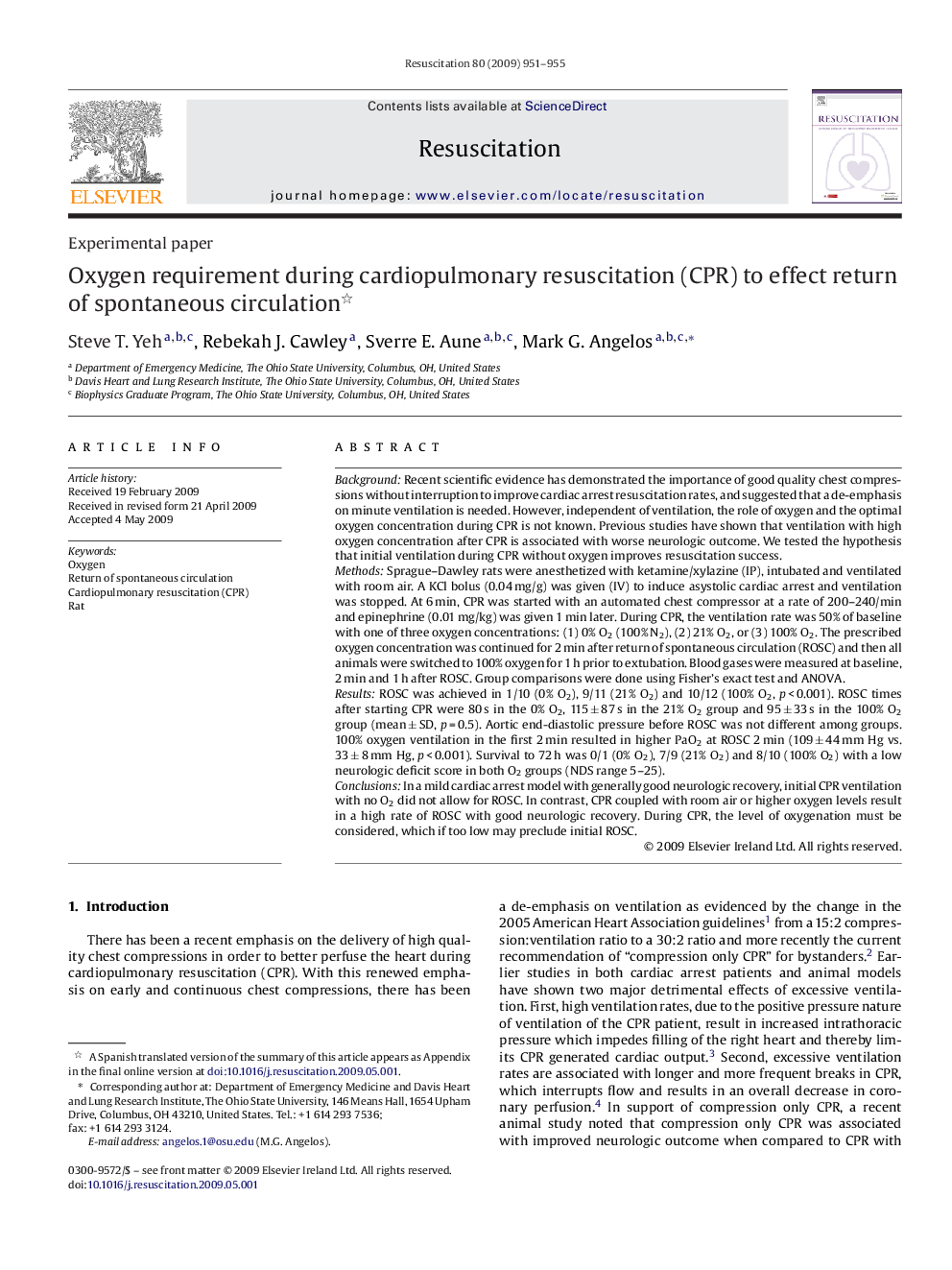| کد مقاله | کد نشریه | سال انتشار | مقاله انگلیسی | نسخه تمام متن |
|---|---|---|---|---|
| 3010234 | 1181507 | 2009 | 5 صفحه PDF | دانلود رایگان |

BackgroundRecent scientific evidence has demonstrated the importance of good quality chest compressions without interruption to improve cardiac arrest resuscitation rates, and suggested that a de-emphasis on minute ventilation is needed. However, independent of ventilation, the role of oxygen and the optimal oxygen concentration during CPR is not known. Previous studies have shown that ventilation with high oxygen concentration after CPR is associated with worse neurologic outcome. We tested the hypothesis that initial ventilation during CPR without oxygen improves resuscitation success.MethodsSprague–Dawley rats were anesthetized with ketamine/xylazine (IP), intubated and ventilated with room air. A KCl bolus (0.04 mg/g) was given (IV) to induce asystolic cardiac arrest and ventilation was stopped. At 6 min, CPR was started with an automated chest compressor at a rate of 200–240/min and epinephrine (0.01 mg/kg) was given 1 min later. During CPR, the ventilation rate was 50% of baseline with one of three oxygen concentrations: (1) 0% O2 (100% N2), (2) 21% O2, or (3) 100% O2. The prescribed oxygen concentration was continued for 2 min after return of spontaneous circulation (ROSC) and then all animals were switched to 100% oxygen for 1 h prior to extubation. Blood gases were measured at baseline, 2 min and 1 h after ROSC. Group comparisons were done using Fisher's exact test and ANOVA.ResultsROSC was achieved in 1/10 (0% O2), 9/11 (21% O2) and 10/12 (100% O2, p < 0.001). ROSC times after starting CPR were 80 s in the 0% O2, 115 ± 87 s in the 21% O2 group and 95 ± 33 s in the 100% O2 group (mean ± SD, p = 0.5). Aortic end-diastolic pressure before ROSC was not different among groups. 100% oxygen ventilation in the first 2 min resulted in higher PaO2 at ROSC 2 min (109 ± 44 mm Hg vs. 33 ± 8 mm Hg, p < 0.001). Survival to 72 h was 0/1 (0% O2), 7/9 (21% O2) and 8/10 (100% O2) with a low neurologic deficit score in both O2 groups (NDS range 5–25).ConclusionsIn a mild cardiac arrest model with generally good neurologic recovery, initial CPR ventilation with no O2 did not allow for ROSC. In contrast, CPR coupled with room air or higher oxygen levels result in a high rate of ROSC with good neurologic recovery. During CPR, the level of oxygenation must be considered, which if too low may preclude initial ROSC.
Journal: Resuscitation - Volume 80, Issue 8, August 2009, Pages 951–955